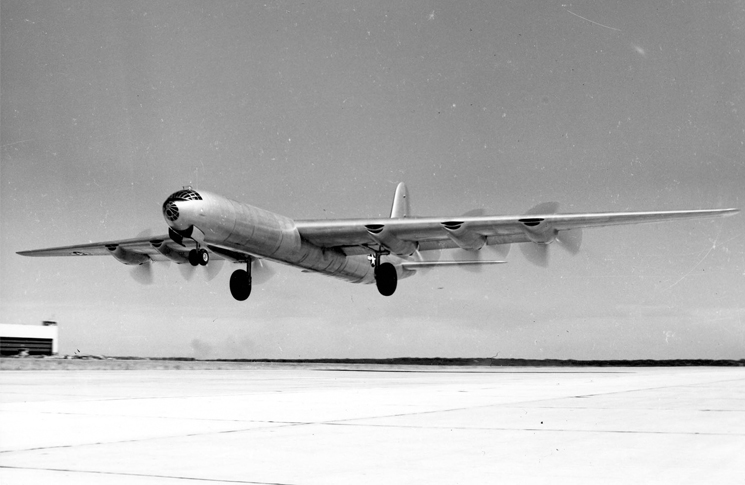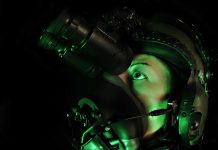
Nitrogen
Nitrogen inflation serves a vital safety purpose in aircraft tyres, as demonstrated by the horrible fate of Mexicana Airlines flight 940. It was a Boeing 727 that crashed in 1986 after a dragging brake overheated a wheel on take-off, eventually causing an explosion and fire after the gear was retracted. All 167 on board died. The tyre had been filled with compressed air instead of non-flammable nitrogen. CASA airworthiness directive AD/WHE/4 mandates nitrogen inflation of tyres for aircraft with an MTOW of more than 5700kg, as well as for smaller aircraft if their tyres are speed-rated to more than 266km/h. The reason for using nitrogen is to eliminate the possibility of a chemical reaction between atmospheric oxygen and volatile isoprene gas (produced by severe heating of the tyre)causing an explosion.
AD/WHE/4 allows for top-ups with air but restricts oxygen content in the tyre to 5 per cent (insufficient for combustion), rather than the 21 per cent oxygen content of air.
Multi-crew pilot licence (MPL)
The prevailing model of airline pilot development has been to learn to fly a small aircraft and then build experience on it before making the transition to flying larger jet aircraft. The multi-crew pilot licence (MPL) bypasses much of this process. It is ‘focused from day one on preparing a co-pilot candidate for the right seat of an advanced airliner’. MPL pilots take their place in the right seat with fewer flying hours, but after an intense training regime that uses ‘a competency-based approach to training developed with an emphasis on improving flight deck safety’. The training places great emphasis on crew resource management (for example) and other skills that pilots with experience mostly in single-pilot flight decks might not have been as exposed to. Simulators, with their capacity to reproduce specific aviation scenarios, are an important tool in MPL training. The training has been controversial and the performance of MPL graduates has been closely monitored, but no significant differences from conventionally trained pilots have emerged.
Notams
A notice to airmen is a written alert to aircraft pilots of potential hazards along a flight route or at a location that could affect the safety of the flight. Notams were originally published in aviation publications, such as Flight International and Flight Magazine and were written in plain, non-technical language. After the formation of ICAO in 1947 they adopted upper-case lettering and extensive use of abbreviations, partly for standardisation and also to allow them to be transmitted by teletype machines. A recent technical development is internet websites that translate coded notams into plain language. Future notams might be received by the aircraft and converted into information for the pilots, or automatically complied with by flight systems.
Performance-based navigation (PBN)
Performance-based navigation (PBN) uses global navigation satellite systems (GNSS) and computerised on-board systems. This is in contrast with traditional sensor-specific navigation based largely on fixed ground-based beacons guiding aircraft along published routes. Navigation using legacy ground aids is ‘relative navigation’ since aircraft are always operating relative to the navaids – whether tracking to or from aids, or flying to a point defined by a VOR radial and DME distance from a ground station. PBN, on the other hand, is ‘absolute navigation’ – the aircraft operates by first determining its position in latitude and longitude, and then where this position is in relation to the intended flight path. This has the major advantage of flexibility: if the aircraft has a means of determining its position, it can operate anywhere that positioning system will operate. Under PBN, aircraft can navigate ‘off the beaten track’ with accuracy and safety. PBN is the navigation of the future and it is coming soon. From 4 February 2016 all aircraft operating in Australia under IFR will have to be equipped with GNSS.
Metal fatigue (and the case of the Comet)
Metal fatigue occurs when a metal is subjected to repetitive loading (a force on the metal) and unloading (called cyclic loading) well below the maximum design load for the material. As this process occurs, micro-cracks emerge in the structure of the metal, and propagate throughout, permanently reducing its overall strength. This can leave the metal unable to withstand previously sustainable cyclic loads, and catastrophic failure soon follows.
Pressurised aircraft experience loads on the fuselage in every flight.The famous case of the de Havilland Comet, the first jet airliner, is a sobering example of catastrophic failure due to metal fatigue. In 1954, the first Comet broke up in flight, killing all 35 people on board.
The Comet’s square windows (strictly speaking it was the window-like automatic direction finder aerial cover that failed) were discovered to increase the stress on the fuselage by a factor of up to three compared to what had been estimated, due to the very sharp radius of curvature at their corners. This is called a stress concentrator or stress riser. In conjunction with the thin aluminium skin and high cabin pressure (at 8000 feet) this caused crack initiation near the sharp edges of the windows, and subsequent crack propagation and catastrophic failure of the fuselage.
The Comet disaster led to a much greater understanding of metal fatigue and how it can be detected and prevented.
Non-destructive testing (NDT)
An important part of aircraft maintenance is checking the strength and state of structural parts. A range of non-destructive testing practices has evolved to do this.
A dye penetrant inspection (or DPI) is a non-destructive technique used to find surface cracks or defects in certain materials (metals and ceramics etc.). It works in a fairly simple manner; initially the penetrant (which is dyed an unmistakable colour) is applied to a clean part (such as a hinge or an I-beam) and left for a defined amount of time, so that the penetrant is able to seep into any cracks or surface defects. After the pre-determined time, the residual penetrant is cleaned off the surface and a ‘developer’ is applied to the surface of the part. This developer draws out any penetrant hiding in the cracks or surface defects, identifying them and allowing an expert to determine the health of the part in question.
The advantages of a DPI are the low cost, and the relative ease and speed of application. Unfortunately, a DPI only shows surface defects or cracks, not any internal issues that might need to be identified by another NDT technique such as ultrasound.
Night vision goggles (NVG)
‘Eat your carrots, it will make you see better in the dark!’ say mothers around the country to their children. Unless the child has a Vitamin A deficiency, the carrots won’t actually help that much. Human eyesight is poorly adapted to seeing in dimly lit or unlit environments, so we tend to avoid darkness and its dangers (most of the time anyway!). However, EMS helicopter pilots need to be able to fly their machines with precision, whatever the visibility, so the release of night vision goggles for non-military use has helped crews to perform their duties by day and by night.
Augmented night vision can be created by the amplification of visible light present, or by increasing the spectrum of light collected to enhance the image. Human eyesight is limited to the visible spectrum (wavelengths around 400nm – violet to 700nm – red), but NVG technology allows infrared light to be used to augment the vision of the wearer.
A refinement of NVG is NVIS (night visual imaging systems). Many of these are no longer goggles-based and can integrate FLIR (forward-looking infra red) and EVS (enhanced vision system) in a panel or head-up display.
Multi-crew operations
In the first half of the 20thcentury, aircraft crews grew in number as systems became more complex, culminating in the Convair B-36 bomber which required an aircraft commander, two pilots, two flight engineers, a navigator and two radio operators, in addition to the military personnel in its crew of 15.A crewthis size lent itself to a hierarchy of command because holding a ‘crewparliament’before each decision would have been impractical in normal conditions, never mind an emergency. Increased reliability and automation have shrunk crew numbers since that high point but, ironically, as crew complements have reduced with more complex aircraft automation, the emphasis on cooperation and consultation has increased. This has been illustrated by accidents when flight crew have communicated poorly, and other events when good communication and collaboration has saved lives.
Multi-crew coordination or multi-crew cooperation (MCC) is an additional training requirement for commercial pilots who are flying large aircraft. Its purpose is to increase the pilot’s ability to work in a team environment. Another important aspect of multi-crew operations in modern aircraft is safe monitoring of and interaction with automated flight control systems.
No smoking
Incredible as it seems to modern sensibilities, smoking once reinforced the glamour of air travel. The doomed R101 and Hindenburg airships both had smoking rooms as part of their designs, although with thousands of cubic metres of flammable hydrogen overhead, smoking was strictly prohibited elsewhere.
Smoking on planes was banned in Australia during the late 1980s and today is prohibited by almost all the world’s airlines, after it was implicated in several fires in airliner toilets that resulted in deadly crashes. The ban doesn’t just apply to the act of smoking however: any activity producing flames and smoke is prohibited.
Despite constant reminders at the start of every flight and the threat of heavy fines, a few passengers continue to light up.In 2013, a Sunwing Airlines flight was forced to make an emergency landing after passengers were caught smoking in the bathroom, forcing the airline to delay the flight and give all the passengers overnight accommodation. In 2014 an Etihad Airways flight from Melbourne to Abu Dhabi had to be diverted to Jakarta after five separate lavatory fires, believed to have been the work of an on-board arsonist.
Parachutes
Of all of the foundations so far, the parachute perhaps has the earliest roots in history, with a first mention during the Renaissance. However, it wasn’t until 1783 that ‘le parachute’ first appeared, with Louis-Sébastien Lenormand jumping off Montpellier Observatory while clinging to a 14-foot cloth contraption with a rigid wooden frame. Even in the late 1700s, his inspiration was safety-driven; to help trapped occupants escape a burning building.
By 1797 André-Jacques Garnerin, also known for his pioneering activities in ballooning, had created the first frameless parachute, and later added vents – dramatically improving its stability.The record for the highest parachute descent is currently held by Felix Baumgartner who jumped from 128,000 feet, breaking the sound barrier in the process.
Today, there are aircraft, most notably Cirrus, fitted with ballistically launched parachutes that slow the descent of the entire aircraft.




All good stuff of course, but if Management doesn’t back the company’s Chief “safety’ Officer, one lousy company procedure (for 2cents worth of profit?) can introduce in-ordinate risk – in multiple areas – and so negate the ability of flight crew to deal with the unexpected or an emergency. Rostering fatigue would be an obvious but there are many examples. The Bean-Counters should have to sit CRM !
Hi Grova
Thanks for your comment. We certainly agree with your standpoint that safety should take priority and that everyone in an aviation organisation needs to be aware that their role has safety implications. That’s why its good to see aviation management courses at unis and colleges, where graduates learn about the distinctive challenges and responsibilities of management in aviation. Pleased you like our ‘foundations’ so far – stay tuned for ten more on Friday.
Regards
FSA team